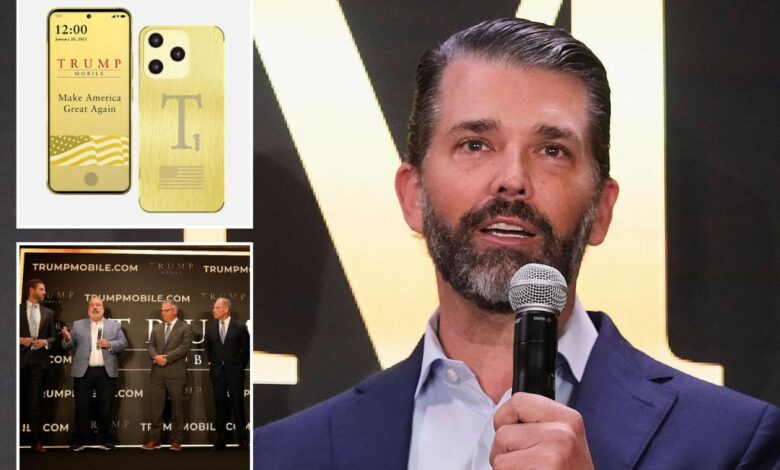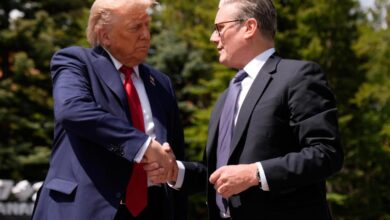Why Trump’s $499 smartphone likely won’t be made in the USA — yet

Trump Mobile’s $499 Smartphone Made in the USA: A Bold Promise or Fool’s Gold?
Trump Mobile’s announcement of a $499 gilded smartphone, the T1, to be made in the USA by this summer has stirred up the tech industry. The phone boasts specs that rival high-end Apple iPhones, but for a fraction of the price.
The T1 phone is set to feature a 6.8-inch AMOLED screen, 256GB of storage with expandable memory, and a 50-megapixel rear camera array, according to the company’s website. Comparatively, Apple’s iPhone 16 Pro Max, mainly manufactured in China, offers similar specs but at a higher cost of $1,199.
Industry experts have raised doubts about the feasibility of producing such a phone in the US at the promised price point. Tinglong Dai, a business professor at Johns Hopkins University, mentioned the challenges of building the necessary infrastructure for domestic smartphone production.
During an interview, Eric Trump hinted that the T1 may not be entirely manufactured in the US by its expected August launch date. The company’s press release states that the Android-based phone will be “proudly designed and built in the United States.”
While details about the manufacturing location and suppliers remain undisclosed, analysts speculate that early units could potentially come from Chinese manufacturers like Xiaomi or Oppo due to their ability to produce premium Android phones at a lower cost.
Smartphones are the result of a complex global supply chain, with key components sourced from various countries. Final assembly typically takes place in countries like China, India, or Vietnam by contract manufacturers.
President Trump’s recent tariff threats on Apple have added pressure on the tech giant to consider moving manufacturing operations back to the US. Meanwhile, Trump Mobile’s focus on launching a wireless service could provide a quicker path to market.
As the tech world awaits the arrival of the T1 smartphone, the promise of a $499 “Made in USA” device raises questions about the feasibility of such a venture in the current industry landscape.





